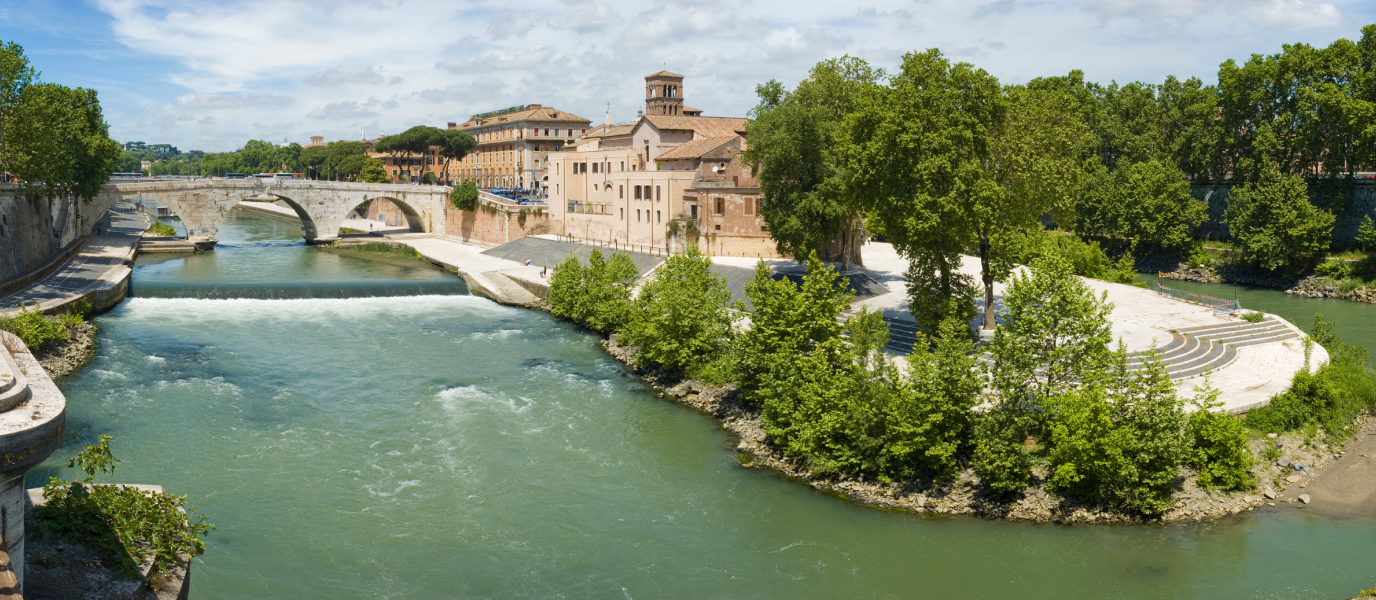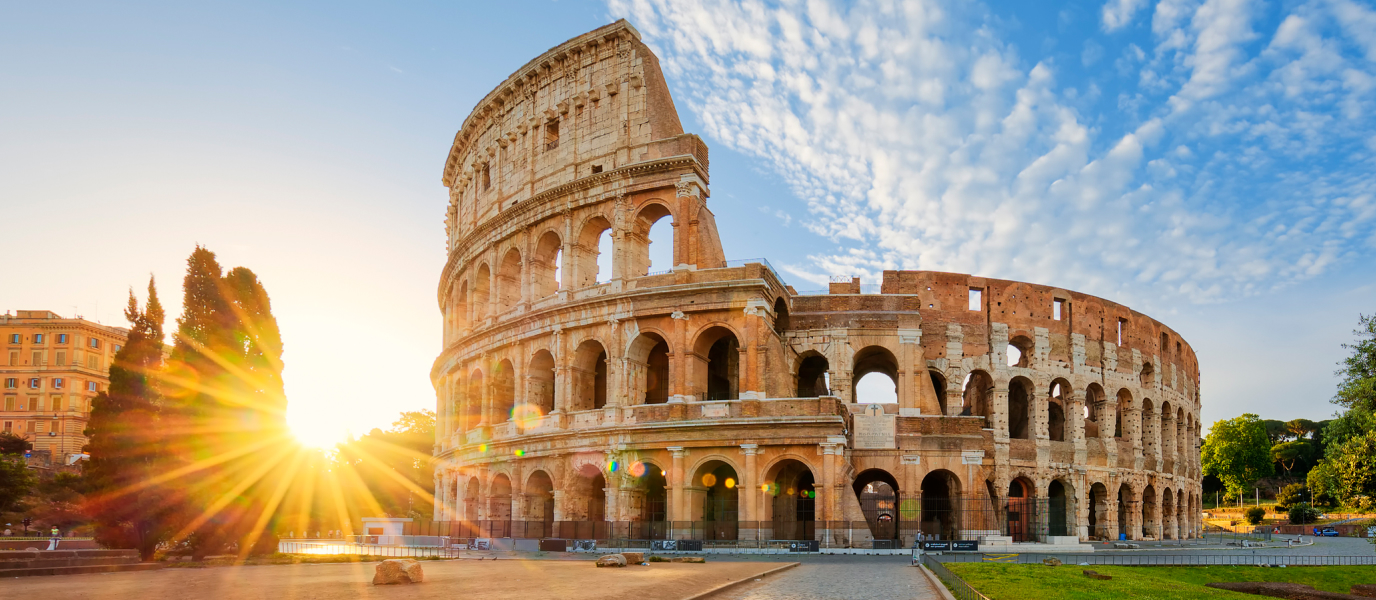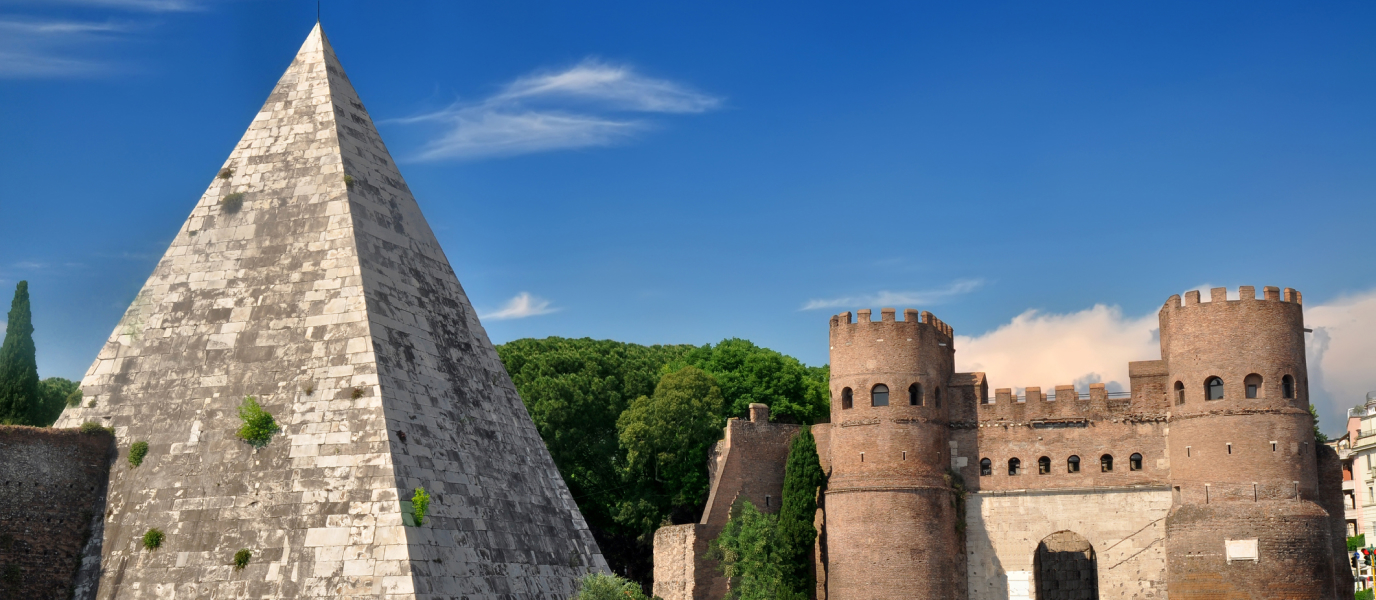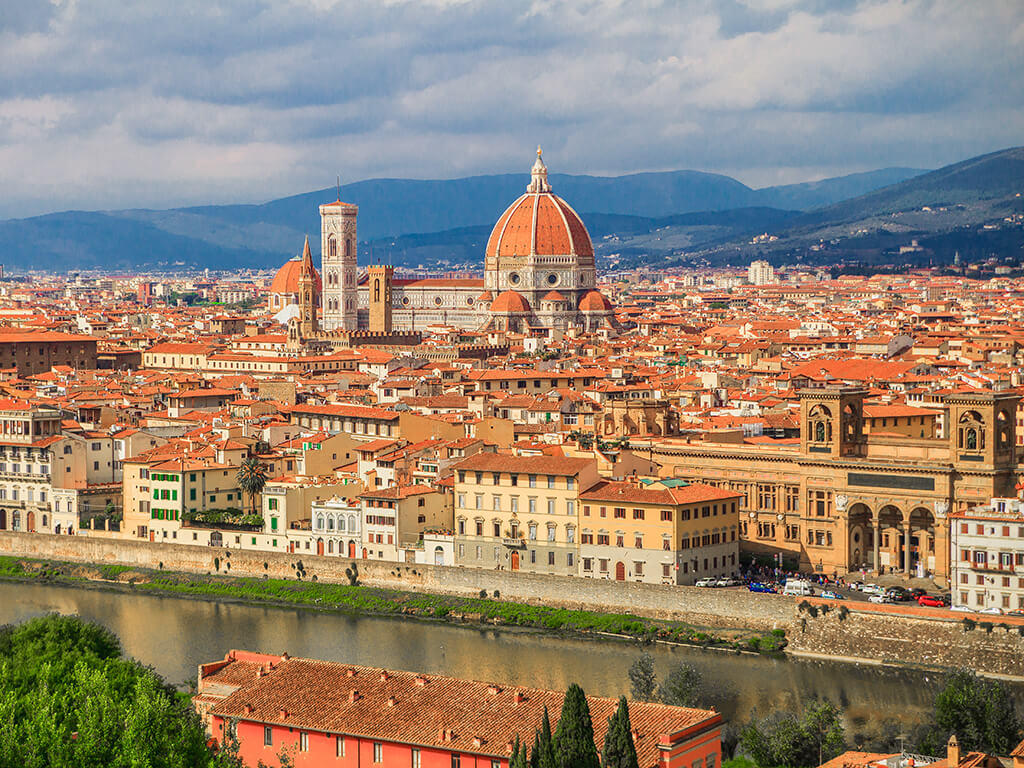Tiber Island, in the middle of the River Tiber, is just 270 metres long and makes the perfect Roman day trip in good weather. You’ll see plenty of locals lying at the water’s edge enjoying the beautiful views of the old bridges, or whiling the afternoon away on one of the terraces.
This strange little island in the heart of Rome is imbued with legends and far-fetched tales. It’s connected to the city by the Cestio and Fabricio bridges: the first was built in 46 BC and joins the southern part of the island with Trastevere; the second was built in 62 BC, making it the oldest bridge in the city. Fabricio Bridge connects the northern part of the island with what was the Jewish ghetto. There’s also a third bridge, or what remains of it at least: Emilio Bridge, also known as the Broken Bridge.
Legends of Tiber Island
Legend tells that the island was formed after the death of the last king of Rome, Lucius Tarquinius Superbus. After his body was thrown into the river, sand accumulated on top of it and the island took shape. The Romans of the time thought the island was filled with bad omens and preferred to avoid it. Only the worst criminals were condemned to live out the rest of their lives there.
A plague hit Rome during the year 293 BC and the Romans tried several measures to eradicate it, including the construction of a hospital on Tiber Island in honour of Asclepius, the God of Medicine. Following an expedition to find a statue of the deity, a snake (the animal form of the god) slithered off the ship and headed for the island. In those days, this was irrefutable proof that a temple should be built on the island.
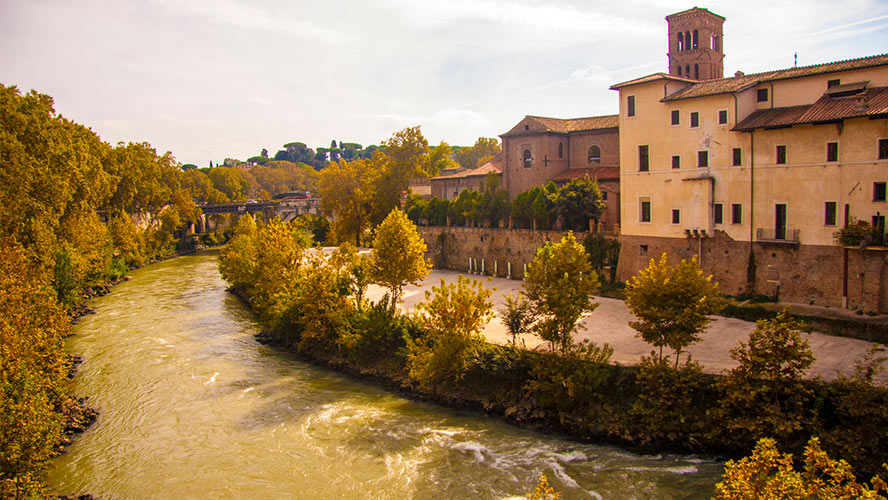
The plague miraculously waned when the Temple of Asclepius was completed. The island was subsequently modified with new walls that made it resemble a boat – complete with ‘prow’ and ‘stern’, and a central obelisk or ‘mast’ – in honour of the event. You can still see the remains of the walls, and part of the obelisk is now in the National Archaeological Museum in Naples.
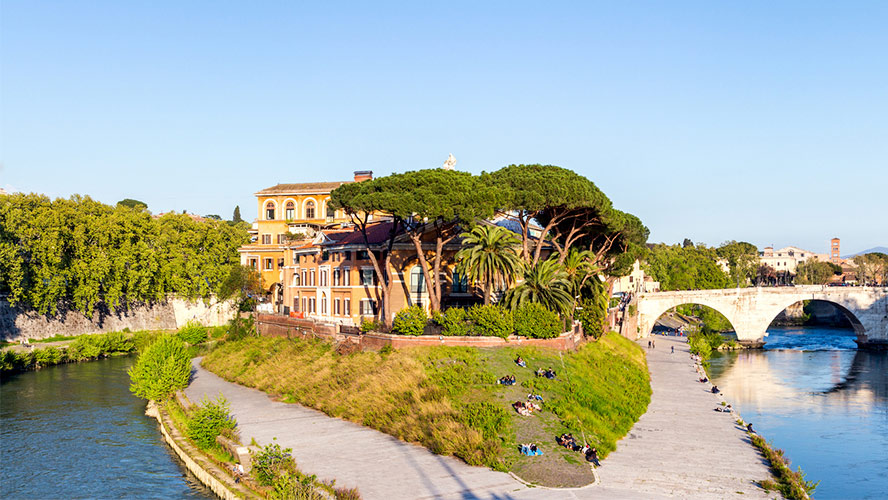
Buildings on Tiber Island
Tiber Island was the perfect place for seeking protection. During the Middle Ages, its temple was used as a palace fortress, first by the Pierleoni family and later by the Caetani family. After it was flooded it became a Franciscan convent and hospital. It now houses the San Juan de Dios Hospital, one of the best and most renowned in the city.
Next to the hospital is the church of San Giovanni Calibita. Its outer wall has a fresco depicting the miracle of Madonna della lampada (Madonna of the Lamp) which says that when the image of the Virgin and her lamp were submerged during a flood, her lamp stayed lit the whole time.
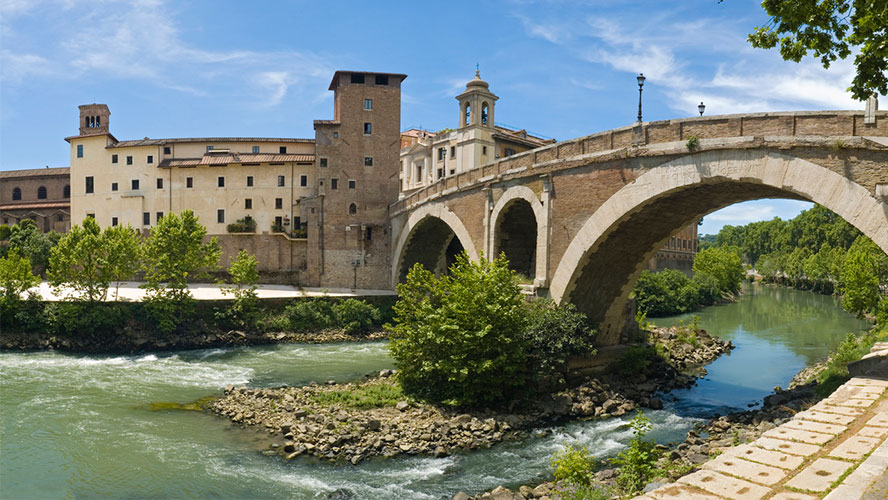
In the 10th century, Emperor Otto III ordered that the Basilica di San Bartolomeo all’Isola be built where the temple once stood (taking up almost the entire island). The new basilica would house the remains of two martyrs: Bartholomew the Apostle, whose body is inside the main alter, and Bishop Adalbert of Prague. The church later had to be rebuilt after flooding and the building you see today has a Baroque facade. Caetani Tower, behind the church, is all that remains of the palace fortress built by the Pierleoni clan.
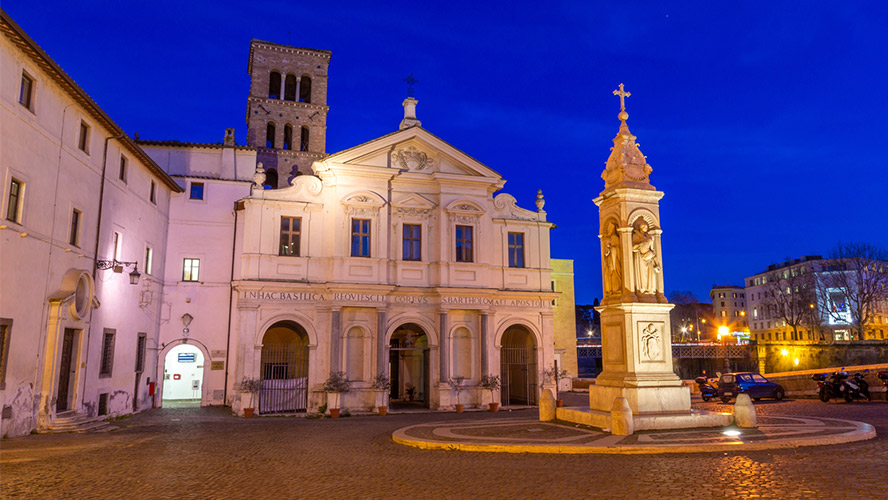
Visiting Tiber Island
The best time to visit is in spring or summer when the weather is perfect for relaxing in the terrace cafes and restaurants. There are market stalls and outdoor film screenings, and plenty of other things to do both day and night.
During the two-week fiesta dei Noantri in honour of Our Lady of Mount Carmel there’s live music in the streets and a whole host of cultural activities. At night, the terraces are packed until all hours as young people, worshippers, tourists and locals all celebrate together. The summer cinema nights are a must, and the annual L’Isola del Cine event includes outdoor film screenings, music, literature, exhibitions and theatre.
Tiber Island is one of the least touristy parts of Rome, so take a walk to this little corner of the city in the middle of the Tiber and delve into its history.



































































